Capital:
Phnom Penh
Currency
Riel
Best time to visit:
Cambodia can be visited all year round but the best time is from December to January, when there is less humidity and the heat, which otherwise can reach 40 ° C, is less intense. The rainy season (June to October) is not a bad time as showers are usually short-lived.
In a word:
Aroun suostei (good morning)
Vaccines
With the exception of Phnom Penh, the area around Tonle Sap and Siem Reap, malaria is present all year round. Both anti-malarial prophylaxis and adequate protection against mosquito bites (sprays, mosquito nets) are recommended, also useful for preventing dengue.
Healthcare facilities are of a good standard in the larger cities and towns. In rural areas, it is better to see a doctor rather than a hospital.
At the table:
Khmer cuisine is virtually unknown. The national specialty is amok (baked fish with lemongrass, chilli and coconut), but there are many other fish and seafood dishes, including Kep's crabs flavored with Kampot pepper. We would not be in Asia, then, if there were no street food, which in Cambodia ranges from noodles (mee) and (congee), a sort of rice porridge, to fried tarantulas and roasted crickets.
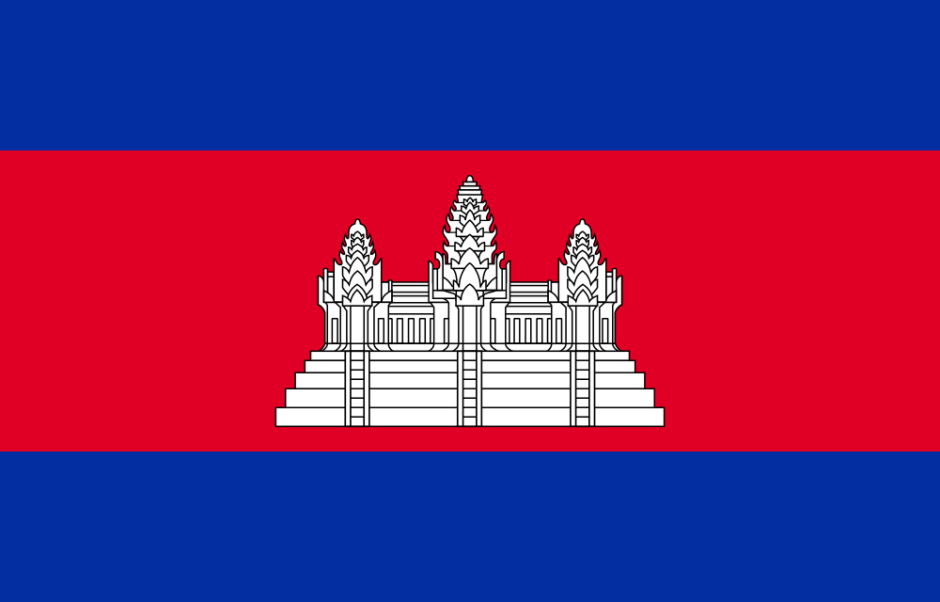

Warnings:
- Tap water is not safe.
- The countryside is still littered with unexploded mines. Don't venture off the beaten path.
- In the capital the traffic is too chaotic, be careful when crossing the streets.
- Watch out for customs officers if you enter by land from Thailand, quite corrupt.
Essential experiences:
Admire the sunrise or sunset from the majestic site of Angkor Wat after spending the whole day exploring it; Sail the placid waters of Tonle Sap Lake in a small boat; Get lost in the chaos of the capital's charismatic Russian Market.
Cambodia is a country of incredible charm, one of the most interesting in Southeast Asia, here you can admire the remains of an ancient civilization, the ancient Khmer temples, rice fields as far as the eye can see, floating villages, lively colonial cities, a culture that will bewitch you, a delicious cuisine a population made up of farmers and fishermen who pass down their traditions from generation to generation.
Cambodia is a rather small country and distances are not a problem as long as you travel between the major locations (Phnom Penh, Siem Reap, Sihanoukville and the main border posts).
We used the comfortable local buses to move from city to city and the tuk tuk inside them, finding ourselves very well. We started from Siem Reap and, by land, reached the capital and then continued towards the Vietnam.
Our suggested itinerary (12 days) | |
four days: | Siem Reap (visit to Angkor Wat) and Tonle Sap (boat ride on the lake) |
two days: | Battambang |
three days: | Sihanoukville (relaxation by the sea) |
three days: | Phnom Penh (visit to Choeung Ek, S21 prison, Russian Market and the Royal Palace) |
Siem Reap, nestled between the ruins of Angkor Wat and the Tonlé Sap lake, takes its name from the long river (83 kilometers) that crosses its characteristic historic center, a lively place, an ideal starting point to discover the wonderful temples and ruins Khmer. The city, built as a starting point for visiting the temples of Angkor, later turned into a very tourist destination with a fantastic choice of markets, boutiques and art galleries not to mention restaurants, cafes and bars ...
What better occasion to give us a romantic dinner in a delightful place?
We stop in one where there is a nice buffet of meat and fish to cook on the barbeque ... each table is organized with a small personal BBQ and each diner cooks for himself! What fun!
"One of those few extraordinary places in the world where one feels proud to be a member of the human race."
Tiziano Terzani, referring to Angkor Wat.
We are very excited, finally today we will realize another great dream of ours: the visit of the legendary Angkor Wat, the largest religious building on the planet.
The ancient Khmer concentrated a number of temples equal to all European cathedrals combined in an area the size of Los Angeles, so you are spoiled for choice!
The entrance ticket to Angkor Wat can be purchased online. On the official website you can upload your photo, pay by credit card and collect your ticket directly at the archaeological site.
Or you can buy them at the Angkor Ticket Center, known as Angkor Enterprise on the corner of Road 60 and Apsara Road.
The box office is open 7 days a week and 52 weeks a year from 5:00 to 17:30.
After 5:00 pm tickets for the next day are on sale, but you can use them to take a look at the temples and at sunset to return calmly the next day as we recommend.
Remember that visitors' clothing must be typical for places of worship: trousers and skirts never above the knee and covered shoulders. Climbing rocks and temples is also prohibited.
It is not necessary to buy the ticket in advance, as the line is usually not too long, but to be safe and watch an extra sunset might be a good idea. 😉
Inside the Angkor complex it is possible to admire several ancient buildings, but one of the most particular, and absolutely worth seeing, is certainly the Bayon Temple: the temple of mystery, its name means: "the magic mountain".
The temple is the subject of great interest thanks to the over 200 faces engraved on the dozens of spiers that surround the area. The face represented is that of Avalokiteshvara, considered a "bodhisattva", or "enlightened" according to Buddhist philosophy. The vision of the gazes engraved in stone can stimulate different feelings, from restlessness to admiration.
Another attraction of the temple are its bas-reliefs depicting ancient fragments of the Khmer people, from battles to parties, up to scenes depicting the daily life of citizens.
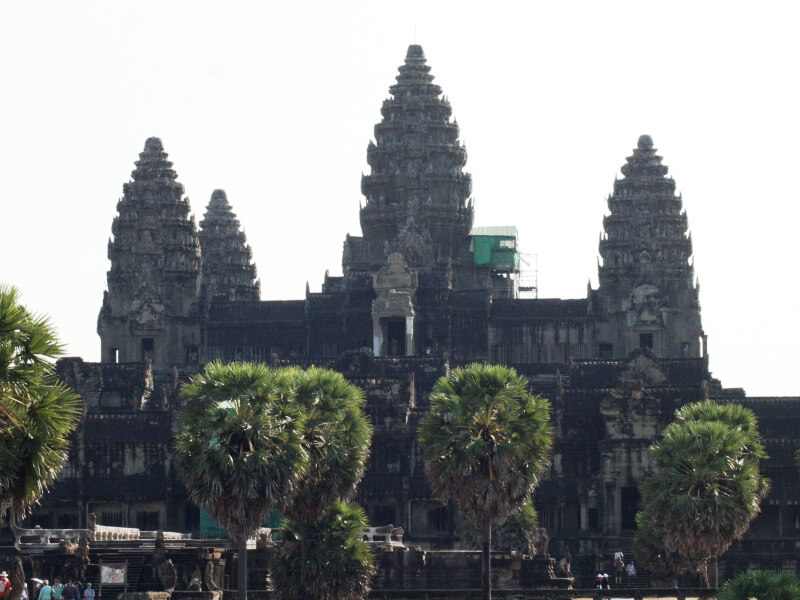
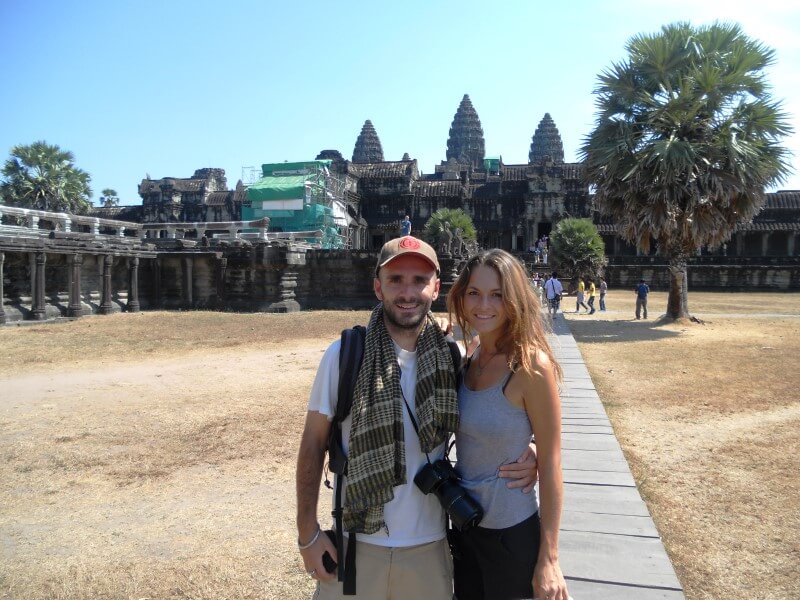


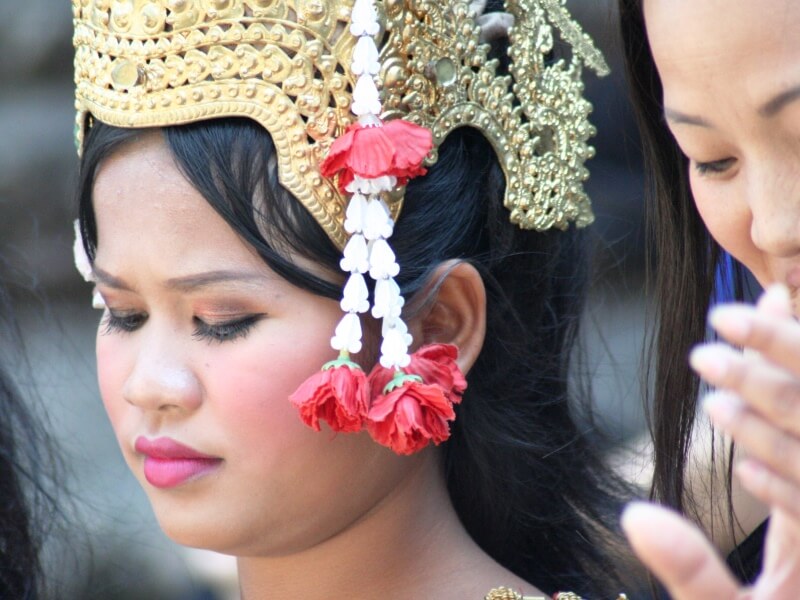
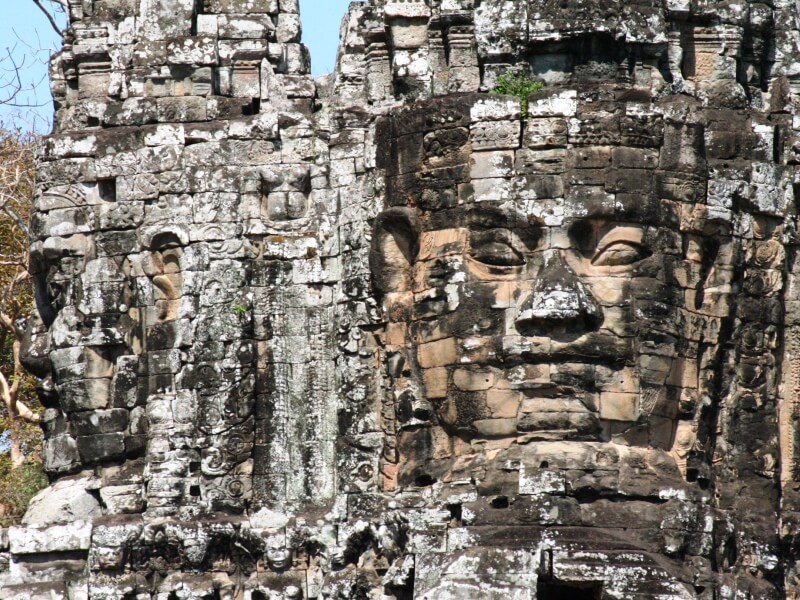
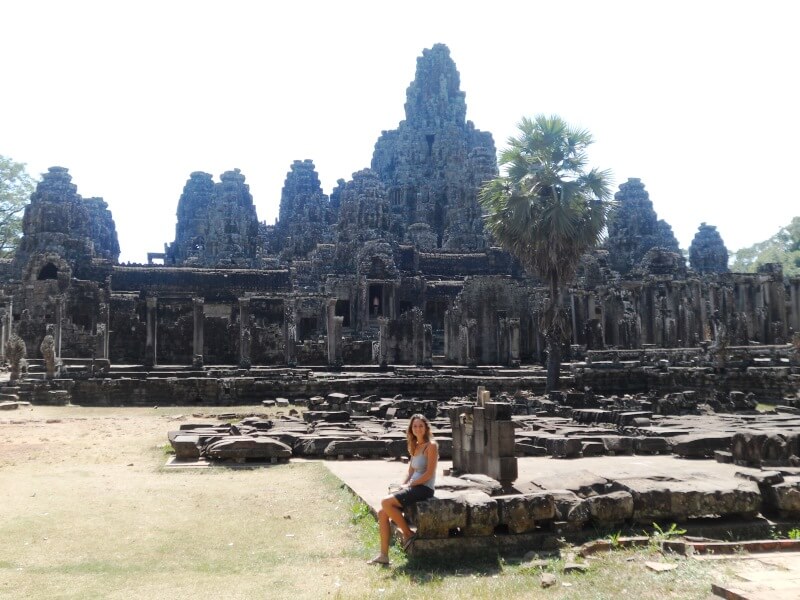

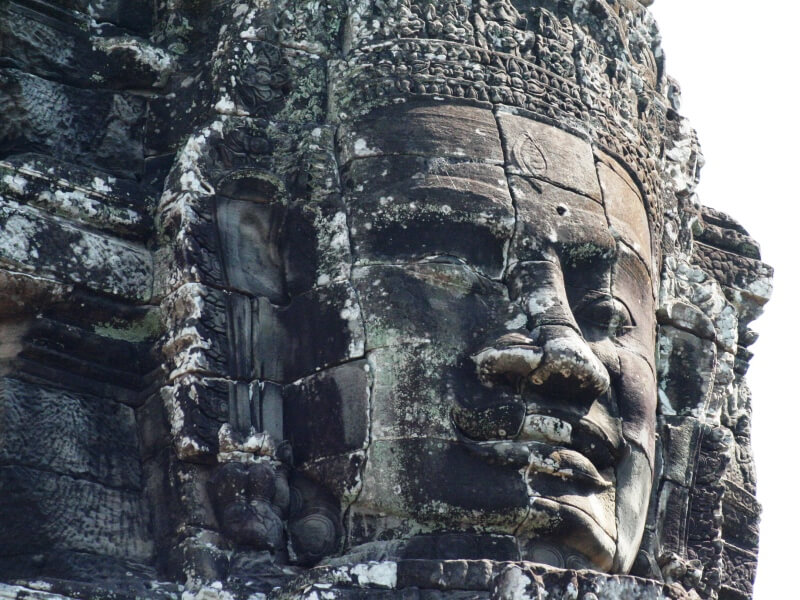

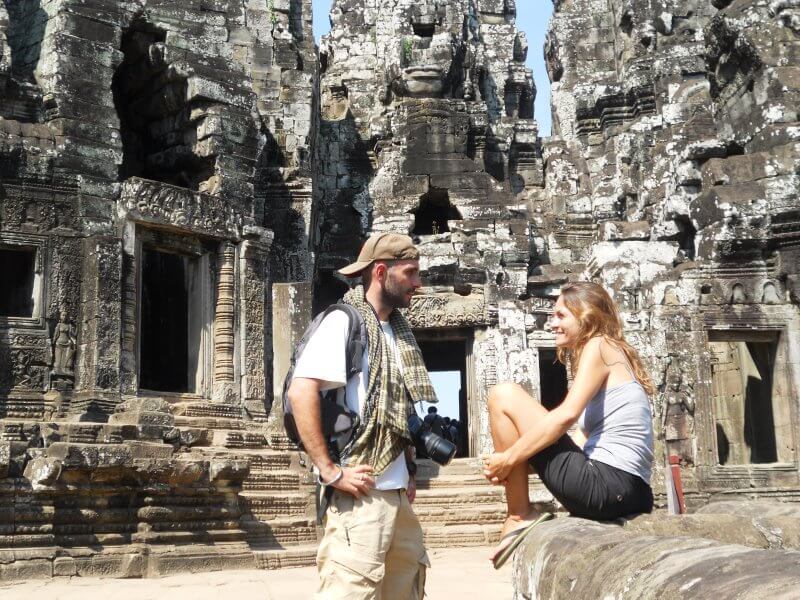

To visit the area, it is more functional to rent a tuk-tuk for the whole day, given the considerable distances between one temple and another.
After a walk on the "terrace of the elephants", we take our tuk tuk to visit the last temple: "Taphrom", where "Tomb Rider" was filmed” with Angelina Jolie.
This temple is a mixture of fairytale magic and romance. When you cross the door of the temple, you can feel the emotion felt by the explorers; huge roots under the stone, the dense vegetation on the walls, statues, faces covered with moss… it's an incredible sight.
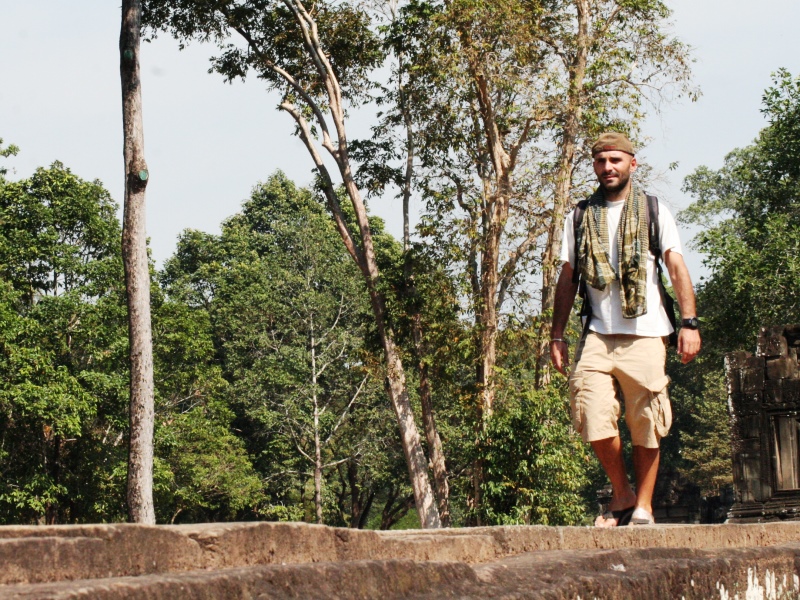
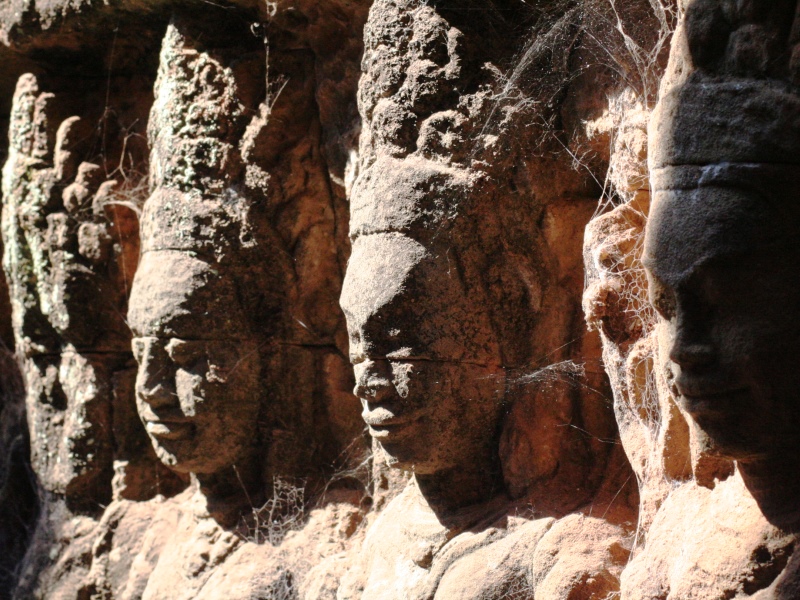


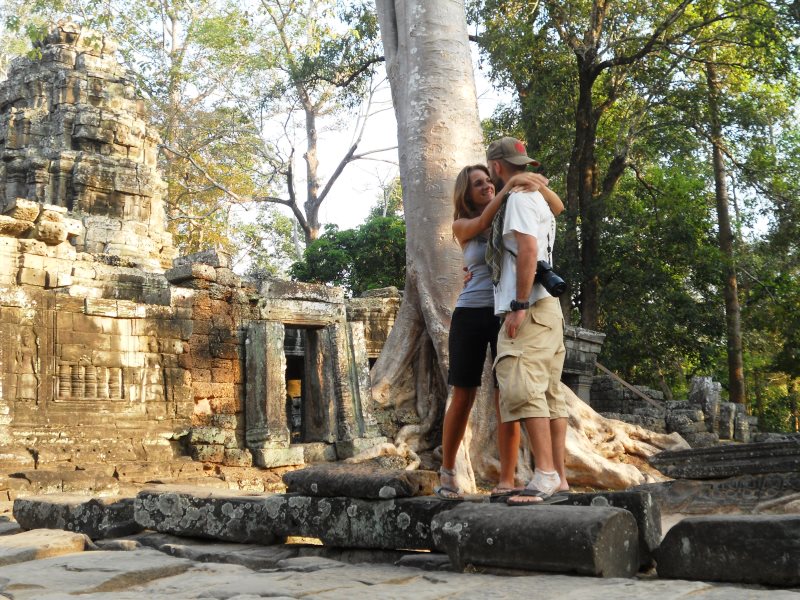
In the evening, back in Siem Reap, we decide to stop at the Old Market where you can really find everything and end up eating a soup and noodles on the street "...
After a full immersion among the temples of Angkor Wat we decide to spend a couple of more days in Siem Reap to visit the surroundings but above all to take stock of the situation.
A visit to the nearby Tonle Sap lake and its floating villages is not to be missed, an attraction halfway between the rare and the surreal, declared a UNESCO World Heritage Site. The surface of this huge freshwater lake is in fact dotted with stilts and boats full of fruit and vegetables, and is animated by fishermen at work and women intent on trading their handicrafts even if the building abuse begins to show itself. and if it is not well regulated, it will risk ruining a very picturesque landscape to be safeguarded.
We reach the lake from Siem Reap comfortably by tuk tuk so that we can appreciate and enjoy even more all the background and have the opportunity to stop to take some photos whenever we wanted, trying to capture the everyday life of Cambodians!
In fact, as we pass by some stilts, we notice two little girls with a bucket full of dead snakes: they stop next to a fountain and, with a spoon in their hands, they begin to peel them under our amused gaze!
We spend the last day in Siem Reap in the way we love the most: Lonely Planet left at the hotel and off to the aimless adventure and following the flow of events!
We are delighted to see the elderly doing tai chi in a park, we sneak into numerous Buddhist temples alone among the monks; we wander among the stalls of numerous small markets always far from the places reserved for tourists!
Stretching along the Sangker River, Battambang is one of the best preserved colonial towns in the country. It can be easily reached from Siem Reap, the starting point of our trip to Cambodia, either by bus or, as we would recommend, by boat, crossing the waters of the Tonle Sap!
Here you will be enchanted by the floating villages, similar to those seen in Myanmar at Inle Lake or Ganviè in Benin. Crossing the first village, I wonder what it can be like to live on the water and what, or who, sets the pace. It is a life so far removed from ours that it seems unreal.
Here we are in Battambang! In the old French shops there is a bit of everything, from fair trade coffee to art galleries. In the surrounding countryside, however, there are some ancient temples which, although not as extraordinary as Angkor Wat, are less crowded and worth a visit.
Although very touristic, in Battambang I recommend you try the Bamboo Train.
It is a wooden and bamboo platform positioned on a system of wheels that are removed and put on if necessary and that travel on the train tracks.
The seven-kilometer journey takes about twenty minutes and is great fun when another bamboo train arrives from the opposite side of your direction, at which point everything stops and one of the two dismounts the train, separating the platform from the wheels, waits for the other to pass to put it back together.
It was once used by Cambodians to move around carrying goods in the short haul.
From Battambang to Sihanoukville, you have 3 options: you can take a bus (11 1/2 hours journey), a taxi (10 hours) or a domestic flight (1 hour flight).
Sihanoukville is a port city on the Gulf of Siam famous for its wonderful white sand beaches that are besieged every year by tourists who love sunbathing and a relaxed life. It can be the right destination for those who need a little break during a long journey.
The city retains a double soul: the somewhat shady port port and the more trendy one, dictated by the recent tourist development.
The islands, easily reachable by boat, are almost uninhabited and covered with virgin forest, but the construction of resorts, guesthouses and bathing facilities is proceeding very quickly.
The historical heart of Sihanoukville's social life is the vast traditional Psar Leu market, almost all covered. You can find everything there: from clothing, to objects, to antiques ...
It is a few kilometers from Otres, a strip of sand where couples and families come in search of sun and relaxation; Sokha, more central, is very pretty and uncrowded; Serendipity is popular with locals during the day and revelers at night.
The northern outskirts of Sihanoukville are at the foot of the highest hill, on top of which is the Wat Leu temple. Populated by seraphic Buddhist monks by a myriad of mischievous monkeys. On it extend the thick foliage of large secular trees that instill a sense of mystical quiet.
We arrive in the capital Phnom Penh after five hours by bus during which we cross this small nation in its depths.
We see his real face, we see the Cambodia of dirt roads, wooden stilts, hens with chicks, country pagodas.
The Cambodian capital is a chaotic and fascinating city at the same time, which has freed itself from the shadows of the past to embrace a bright future.
With one of the most impressive riverside in the region, Phnom Penh is very refined thanks to its trendy hotels, gourmet restaurants and alternative bars.
The extraordinary National Museum and the dreary Tuol Sleng prison represent the best and worst of Cambodian history respectively.
Phnom Penh is a city rich in history… retracing the terrible years from 1975 to 1979 guided our visit today.
We take a short step back in time! Year 1975.
Here, from day to day, an army of poor people, led by a madman “Pol Pot”, invades the country. It is the beginning of a terrible nightmare. In three days, all the cities are emptied of their inhabitants who are sent to the countryside ... the massacre of all the nation's potential "enemies" begins, every intellectual, every scholar, even those who knew another language is considered an enemy!
The sentence is quick and mandatory: death!
Those suspected are tortured until confession. Confession of what?
We visit the “Choeung Ek” (Killing Fields), a place where hundreds of mass graves filled with skeletons of men, women and children have been found. Guilty of what? The place is unreal.
“Tuol Sleng”, now "museum of genocide", better known with the terrible acronym: “S21”.
It was born as an elementary school, built by the French, who would have ever imagined how much atrocious suffering and pain those poor walls would have had to contain?
Its four buildings, in four years, have housed thousands of Cambodians suspected of conspiring against the nation.
It's hard not to feel a lump in your throat as you wander along those gloomy corridors, it's hard not to feel ashamed of human beings who have annihilated, humiliated and slaughtered their fellow men and for no reason, it's hard not to feel anger at the thought that 30 years after, these bastards haven't paid yet ... and then pay? How? It is difficult not to feel hatred if you think that a monster like Pol Pot died "peacefully" in exile in beautiful Thailand, under house arrest.

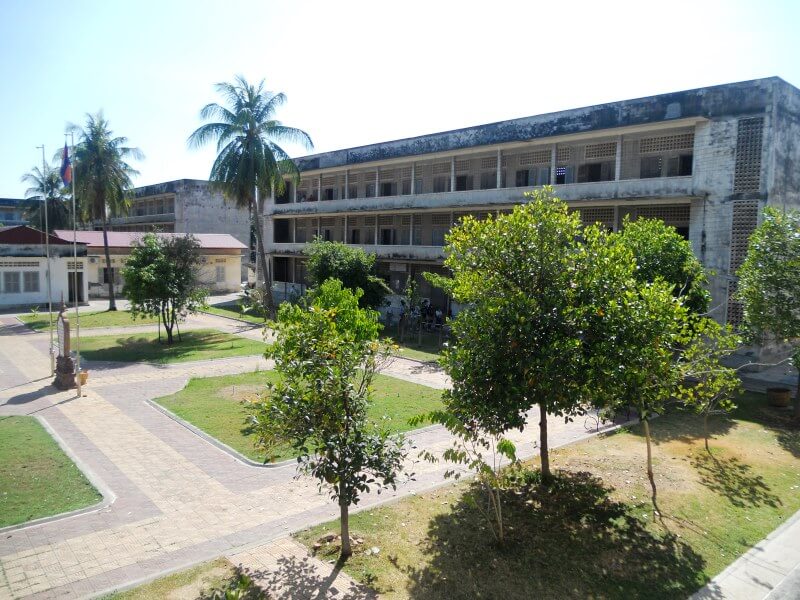


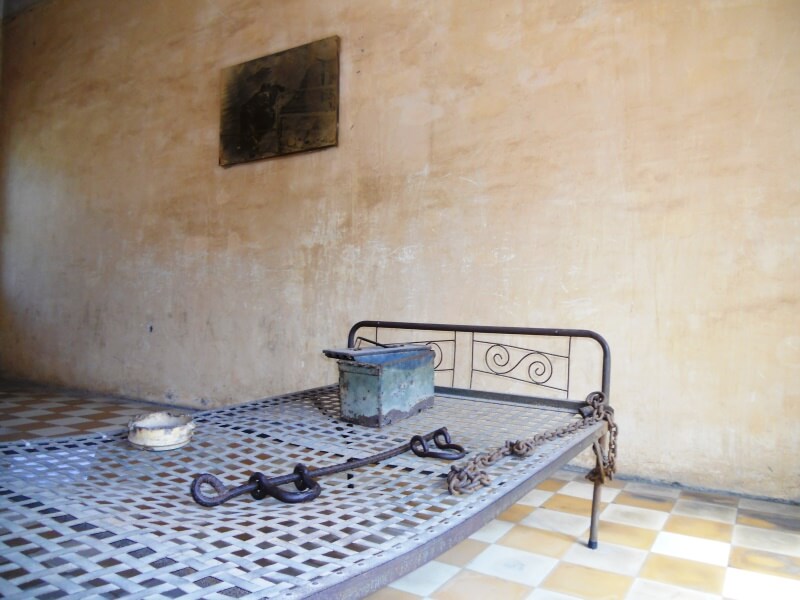
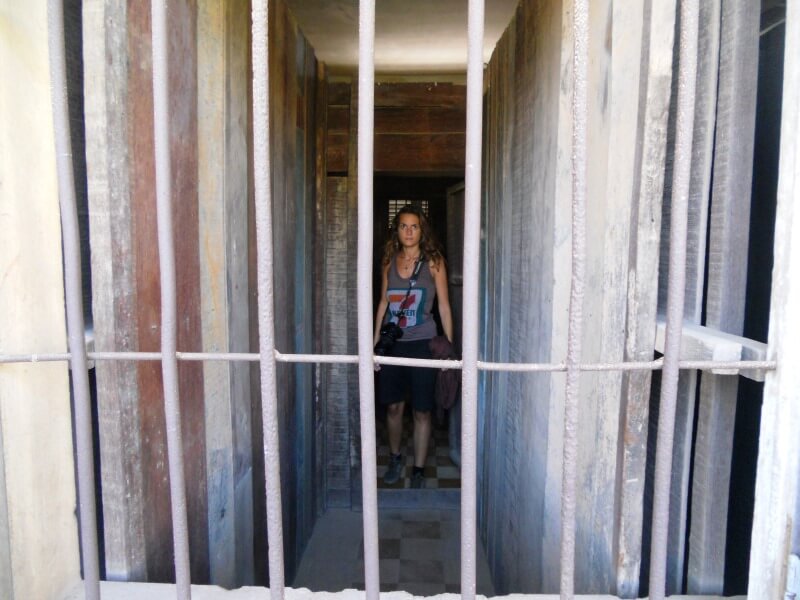
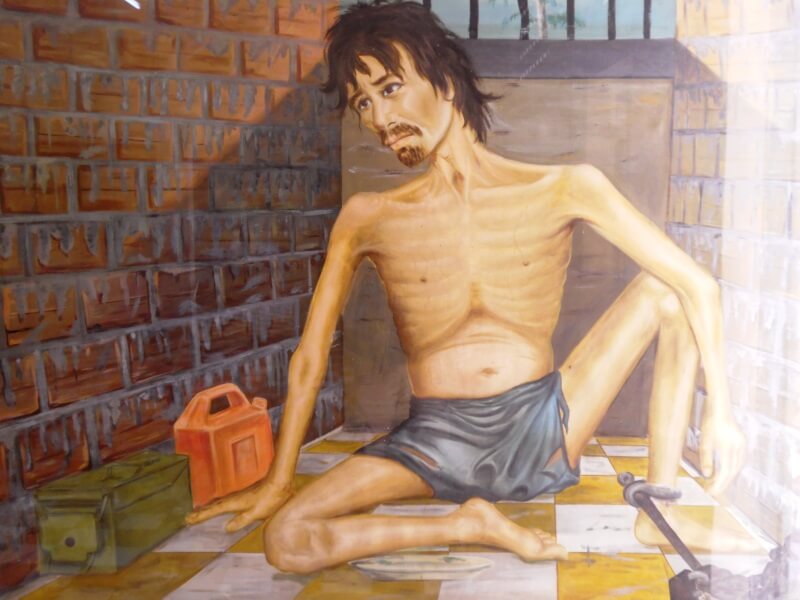


Phnom Penh is a haunted city: “Nights are not restful in Cambodia. The darkness swarms with ghosts. There is something in the air that at night, with silence, comes back to the surface, breathes around me, makes me be on guard, preventing me from abandoning myself to the depth of rest ". They are the hundreds of wandering souls killed by the Khmer Rouge who continue to wander through the city, without peace
Tiziano Terzani
Today we go around to discover this city so alive!
We climb the hill overlooking the whole city, finding refuge within the sacred walls of Wat Phnom before getting lost in the stalls of the Russian Market.
In Asia, as we know, it's all a market and Phnom Penh is no exception. You trade everywhere, and on every corner there is a vendor with his smoking stall. The Russian Market is slowly becoming more and more touristy but in general it still represents one of the interchange points where thousands of traders and buyers flock every day. Here you will find a bit of everything, from spices to typical foods, to fabrics and supplies, up to souvenirs!
We conclude this day and this trip with a visit to the Royal Palace, certainly the most visited attraction in the capital Phnom Penh.
The complex, comparable to the Grand Palace of Bangkok, is divided into 4 large areas: the "Throne Room", the "Silver Pagoda", the Khemarin Palace "and the inter court. The structure was built to accommodate the royal family, therefore it is fenced and not completely open to visitors, but this certainly does not diminish its charm.
Here ends our Cambodian parenthesis, but from Phnom Penh, with a comfortable bus, you can easily reach the cosmopolitan Ho Chi Minh City, Vietnam and continue the exploration of Indochina, as we did!
Error: No feed found.
Please go to the Instagram Feed settings page to create a feed.
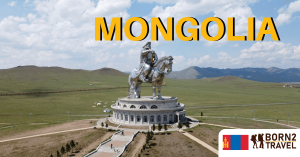
Mongolia Capitale: Ulan Bator Moneta: Tugrik Periodo migliore: Il periodo